The Prado museum is one of the most important and most visited art museums in Spain - not to mention the rest of the world - with over 2 million visitors each year. This is a unique experience you simply cannot pass up if visiting the Spanish capital.
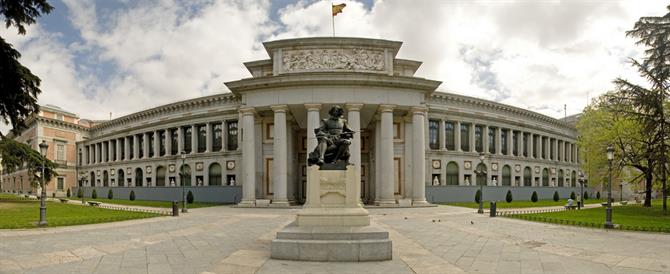
Getting there
The Prado Museum is very centrally located. From the Puerta del Sol plaza, you can walk along Calle de Alcalá until you reach the Cibeles Plaza (pictured below), known for its fountain that sometimes become the celebration grounds for fans after Real Madrid victories!
Cibeles is also your point of reference if you're taking the metro to the Prado: get off at Metro Banco de España (red line L2) and you will immediately see Plaza Cibeles.
Metro Atocha (L1 blue line, train station) is also an option to get to the Prado.
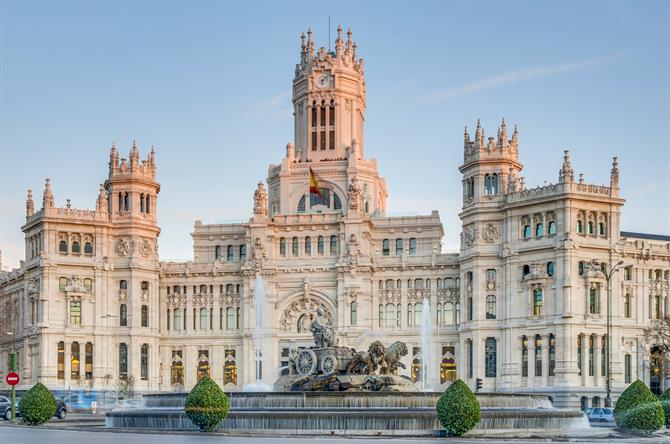
Combine your visit with nearby attractions
From Plaza Cibeles, walk to the museum along the beautiful Paseo del Prado (easy to remember, right?). It's a tree-lined avenue with ornate fountains that were given to the capital by king and mayor, Carlos III.
Here once paraded the nobility in luxury carriages. It's not hard to imagine, as the first true luxury hotels of Madrid stand just across the street from the Prado: the Ritz Hotel (1910) and the Palace (1912).
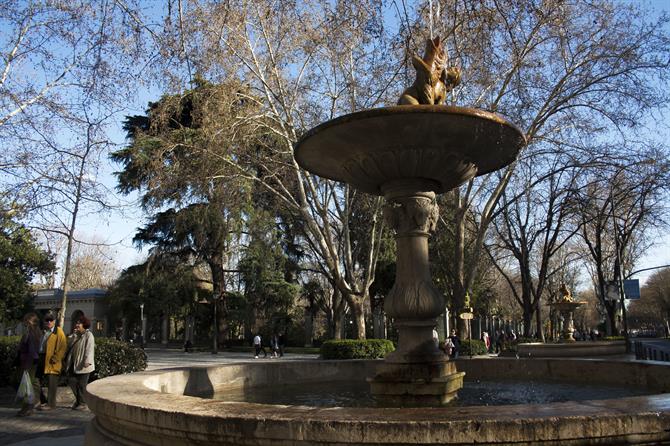
On the other side of the museum is the Royal Botanical Garden, which you can see pictured above, hiding behind the fountain and adjacent to the beautiful Retiro city park; a visit to the gardens is €3. Both the gardens and the park are nice to combine with a visit to the Prado!
The Atocha metro station is just a little further. If you get off at this stop, you'll soon realize there is a small jungle right inside the station itself that's beautiful to see as well! Perhaps stop and enjoy a drink while you watch the hustle and bustle of travellers and Madrid city-dwellers?
Another option if you're needing to relax after visiting the museum is to grab a drink on the rooftop terrace of the Palacio Cibeles hall, or better yet, the Bellas Artes Center, next to the Bank of Spain.
The Prado's treasures
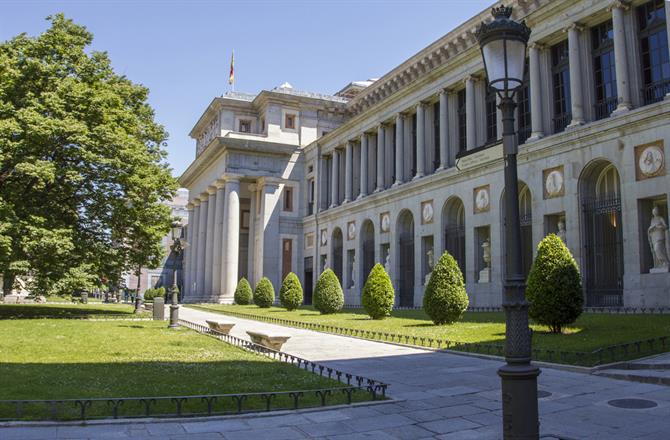
The museum itself contains, still to this day, the largest and most valuable Spanish art collection in the world, ranging from the 15th to the 19th century. It's truly "art fitted for a king": those pieces from the 16th century were collected by the Spanish kings. Much of the art comes straight from royal palaces too!
It was the wife of King Fernando VII who encouraged and granted the opening of the Prado in 1819. The museum helped Spain show the international community what her art was (and is worth). The building was actually designed much earlier, in 1785 specifically, in a neoclassical style and by order of Charles III, but there was no real certainty for its use or for its future.
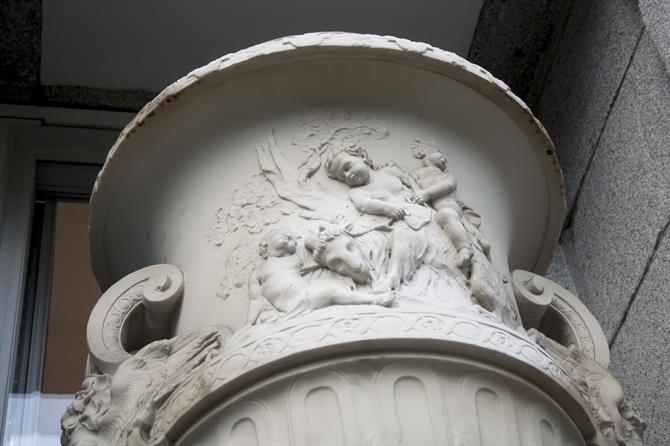
The art collection of the Prado consists of more than 7600 Spanish and European paintings. There are 1000 sculptures (from the Renaissance and Baroque eras until the nineteenth century), 8200 drawings, and 4800 prints and various art objects from palaces and other historical grounds.
There is not enough space to exhibit all the paintings. However, there are frequently temporary exhibitions to visit, often displaying artwork by very popular artists, such as Verlázquez, El Greco, and Goya. These take place in the extension built at the Prado designed by architect Rafael Moneo.
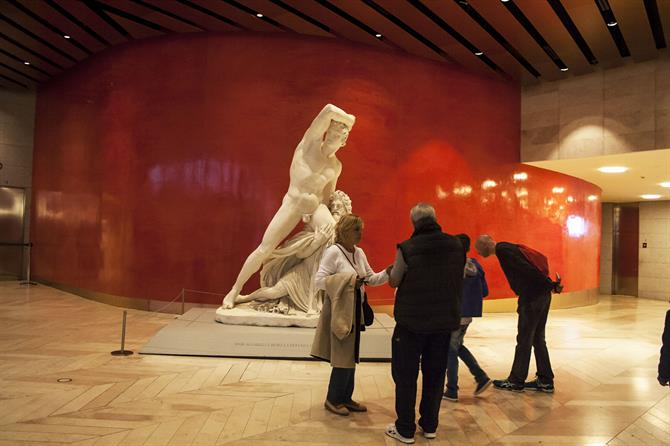
Two important painters who are central to the Prado
For important painters such as Goya and El Greco, there are Prado rooms that are completely dedicated to their work. Here's some background:
1) Spanish painter Francisco Goya in his different phases
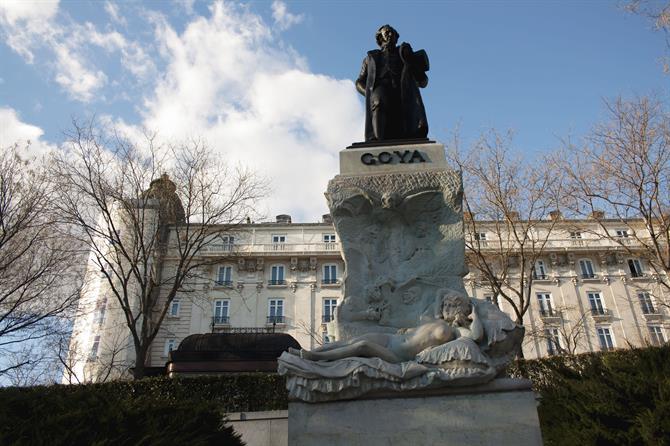
Before even entering the museum, a statue of Goya is what you'll have already seen (the Ritz hotel is just behind it).
Francisco Goya (1746-1828) is thus one of the biggest stars in the Prado. With more than 100 paintings, the Goya collection is by far the largest of all in the Prado.
His works are truly impressive and are especially interesting because of the different phases of his life: from pauper to frivolous court painter to portraying the unpleasantries of deafness and depression. In the Prado, his life stages are divided into several rooms, ending with the Pinturas Negras or "black paintings" from his depressive episode.
His 'El 3 de mayo de 1808 in Madrid' or 'The third of May, 1808 in Madrid' is a Prado highlight: it shows insistently the execution of Spanish rebels against the French occupation in Madrid, with the Palace in the background.
Although Goya was not exactly a fan of the Royal Family, he was in 1789 a court painter under King Carlos IV, much like his idol Velázquez a century before.
Goya's largest canvas that he completed while a court painter is 280 x 336 cm. It's called "Charles IV and his family," and is an incredibly fascinating group portrait from 1800 . It idealizes the Royal Family not so much as was usual, but lets see Goya's own psychological insight into the family. For example, not the king but queen Maria Luisa is central, a deliberate choice by Goya as she completely dominated her husband with her authoritarian and vain character. Until today, this huge portrait is one of the biggest attractions in the Prado museum. An audio guide to a painting like this is very nice to hear the story behind every paintaing (and often, every royal family)!
Goya was inspired for his own masterpiece by Velázquez's famous painting "Las Meninas"(The Hofdames) from 1656, both of which the two artists incorporated themselves into their own paintings.
2) The Spanish court painter Velázquez quirky
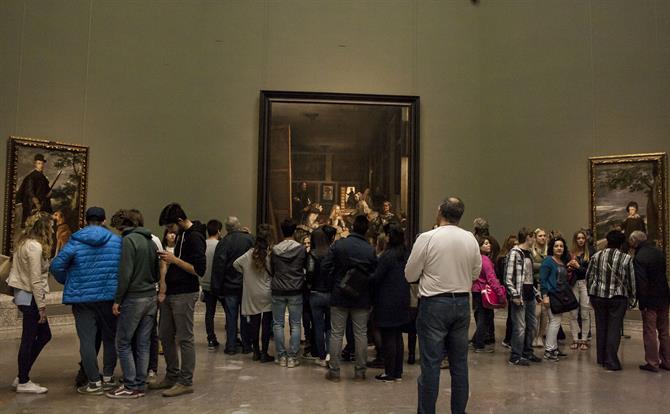
The Prado has a royal art collection and thus, many royal portraits . In the Velázquez room no. 12 for example, you will see many paintings depicting kings or princes prancing around on their noble horses.
Velázquez was a court painter under King Philip IV. His portraits are often extremely interesting for the hidden truths that underly the visual image. He was named "El pintor de la verdad", or "painter of the truth."
His Las Meninas (centered in hall 12) is a portrait of the royal family which speaks to the imagination; for the time, the positioning of those in his portrait is very unusual. A princess is placed with children, a dog, and a dwarf in the foreground; the king and queen are portrayed in a mirror at an angle in the further background, and the painter also incorporates himself more in the foreground. It is by far the most famous work of the Prado museum!
Tips for visiting the museum
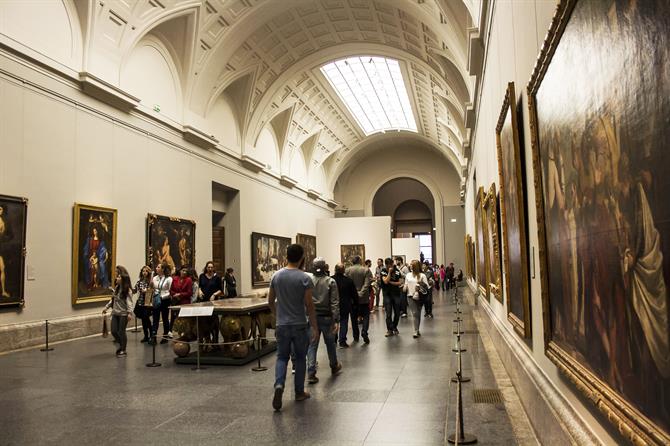
1. Follow the laid-out route:
The Prado is one of the largest museums in the world. You can wander pretty much endlessly through rooms full of beautiful paintings on several different floors. In order to avoid being overwhelmed, or panicking that you will not all be able to see everything - which is impossible if only there for a couple hours, sorry - take a free brochure at the front desk and follow the route of 'highlights' that is laid out. You can choose from three routes: 1 hour, 2 hours, or 3 hours. Each has a progressively greater number of works to see. The routes are broken down to ensure you don't miss the most important art during your allotted time. Some of the most famous and best loved works of the Prado include: Las Meninas by Velázquez, La Maya desnuda (The Naked Maya) and la Maya Vestida (The Clothed Maya) by Goya, The Garden of Earthly Delights by Bosch, The Three Graces by Rubens, and so on!
2. Take an audio guide:
For those who also like to learn the story behind the painting, using an audio guide for your visit is a smart idea. Some of the audio includes history pertaining to that specific piece, stories from the Palace, or how people dealt with religion in the Middle Ages.
3. Visit the museum for free:
Yes, that's correct - you can visit the museum in the last few hours of each day for no charge. Typically there are queues during these hours and more people than usual, also depends on the season and whether you go on a weekday or during the weekend.
Free hours -
Monday to Saturday: 18:00 to 20:00
Sunday : 17:00 to 19:00
You are permitted entrance up to half an hour before closing, so ensure you arrive on Monday-Saturday before 19:30 and Sunday before 18:30.
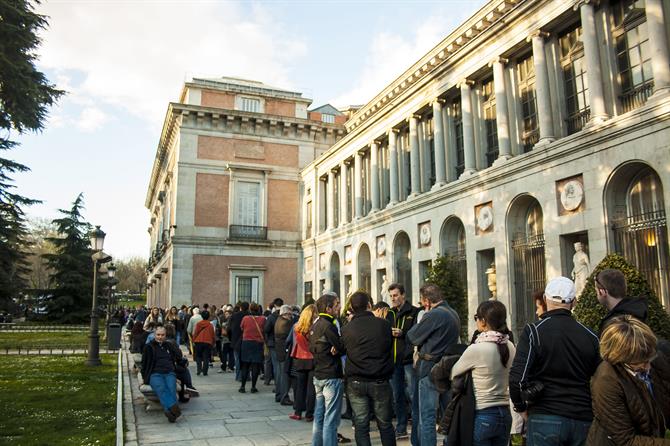
4. Skip the line:
If you are adamant about not waiting in line, simply purchase your ticket online here. This may come in handy if you are planning on visiting during a weekend in high season. Don't fear too much though - the Prado is generally easily accessible, without too long of queues during regular hours.
5. A couple more hacks:
- Photos may not be taken in the museum rooms.
- Your camera and other items (such as coats and bags) can be stored in the cloakroom for free after going through the security check. Some objects such as umbrellas or large bags are not allowed in the museum, so be mindful.
- There is a shop where you can buy prints, books, and other souvenirs.
- Food or drink is not permitted in the museum; however, check out the Prado Café for a coffee or dinner break.
- The museum is accessible to wheelchairs and provides free wheelchairs and canes for use during the visit.
Hours, prices, and contact information
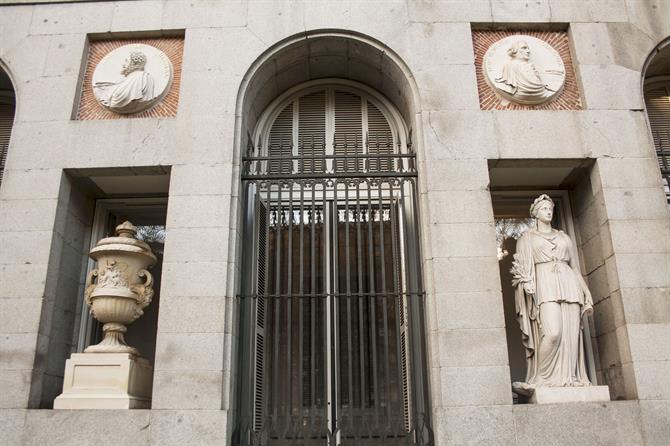
The Prado museum is open every day of the week!
Monday - Saturday: 10:00 to 20:00
Sundays and public holidays: 10:00 to 19:00
Holidays with exceptional roster:
Open 10:00 to 14:00 on January 6, and from December 24 to December 31
Closed January 1, May 1, and December 25
Admission prices:
€ 14 Permanent Collection
€ 7 ticket discount: 65+ seniors, or families with 3 or more children
Free: Children under 18, students 18-26 years old with ID, unemployed, disabled
€ 4 Audio Guide (there is also an audio guide for children that is free when at least one accompanying adult is renting an audio guide)
Fun fact! The Prado, the Reina Sofía, and the Thyssen-Bornemisza museum together form the "Art Triangle", named appropriately for their locations that - you guessed it - make a triangle. You can find them each on the map below. It is perhaps the most important concentration of paintings in Europe!
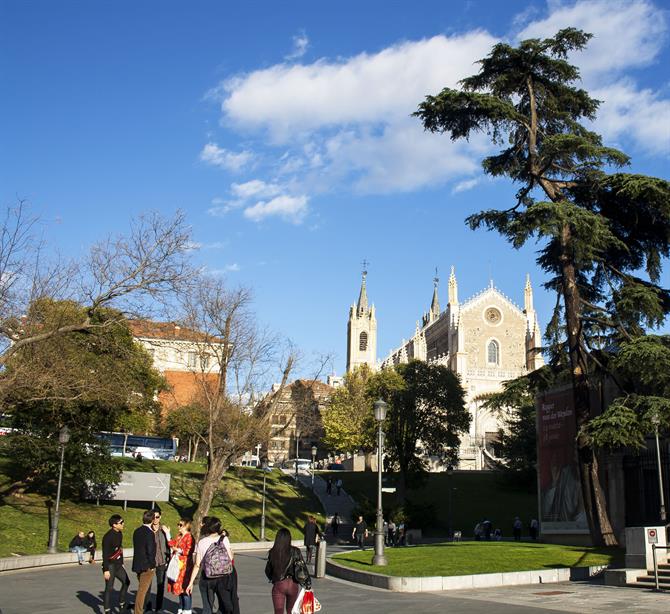
Address and contact:
Museo Nacional del Prado
Calle Ruiz de Alarcón 23
28014 Madrid
info@museodelprado.es
Metro stop: Banco de España (closest to the Prado) or Atocha.
Does this information help in planning your visit to Madrid and to the Prado? Have you already visited the Prado museum? Tell us in the comments section below what you thought of this guide!
